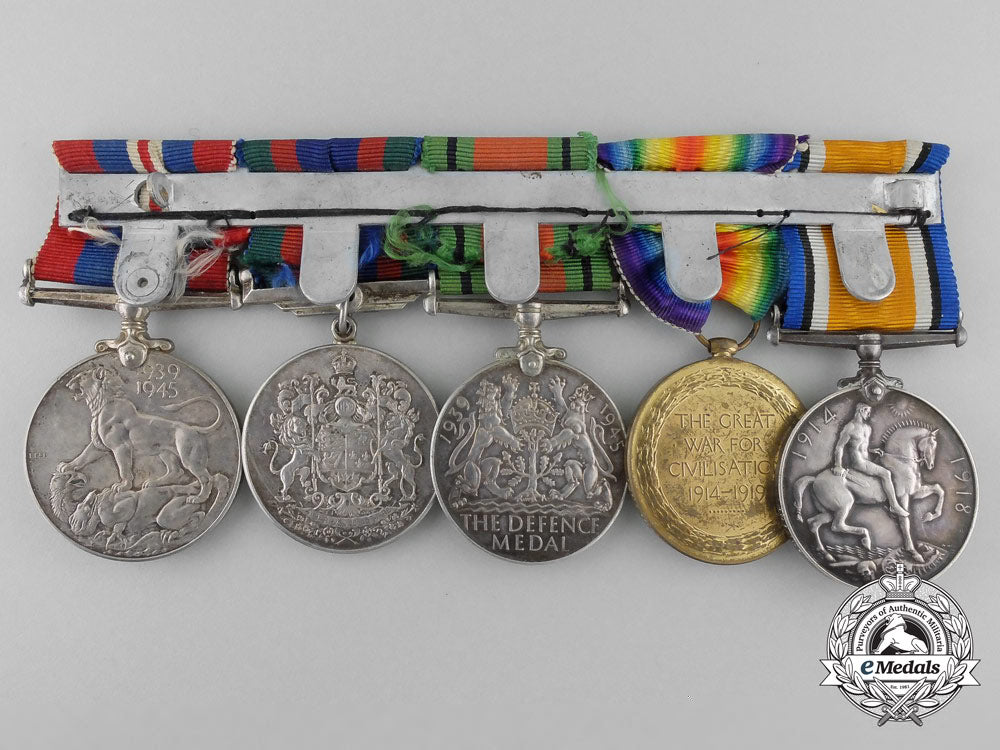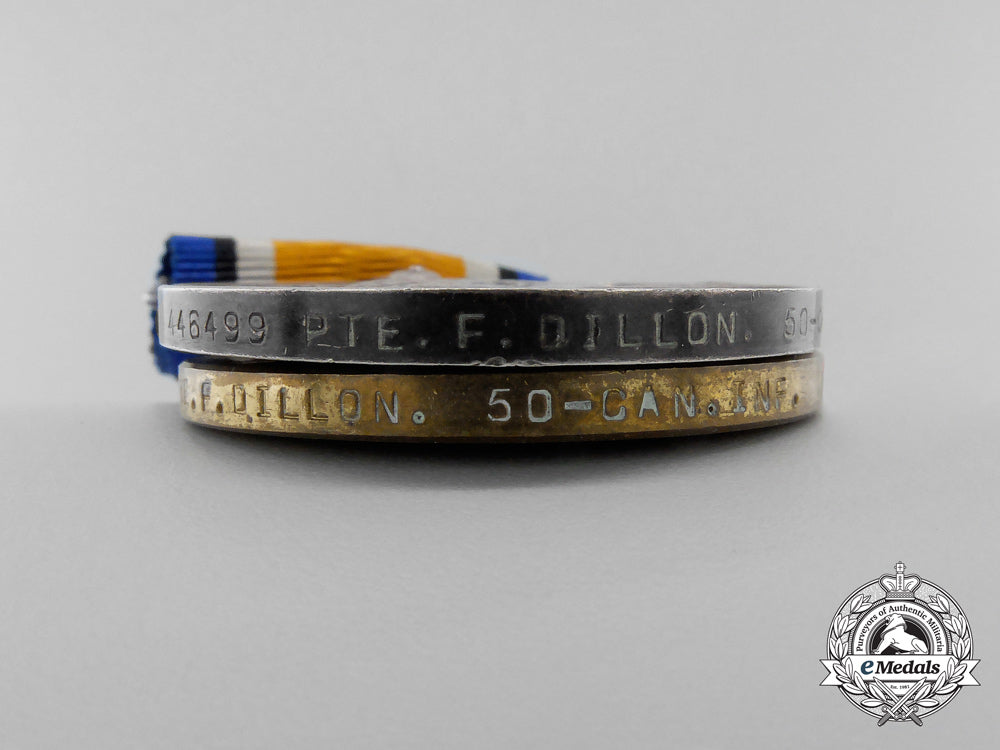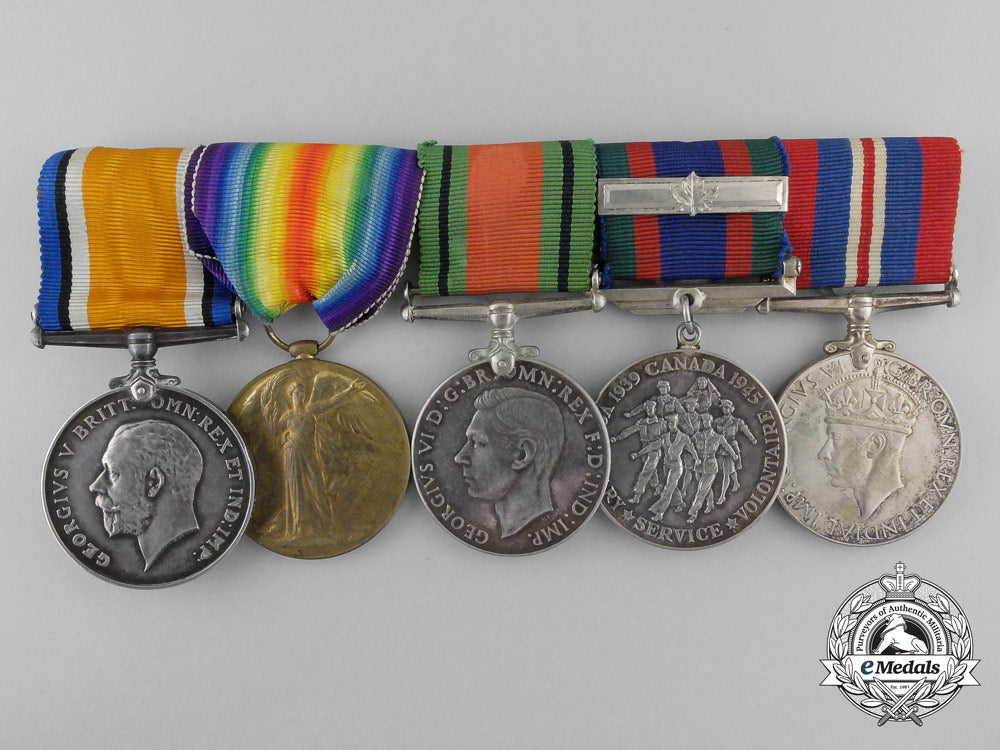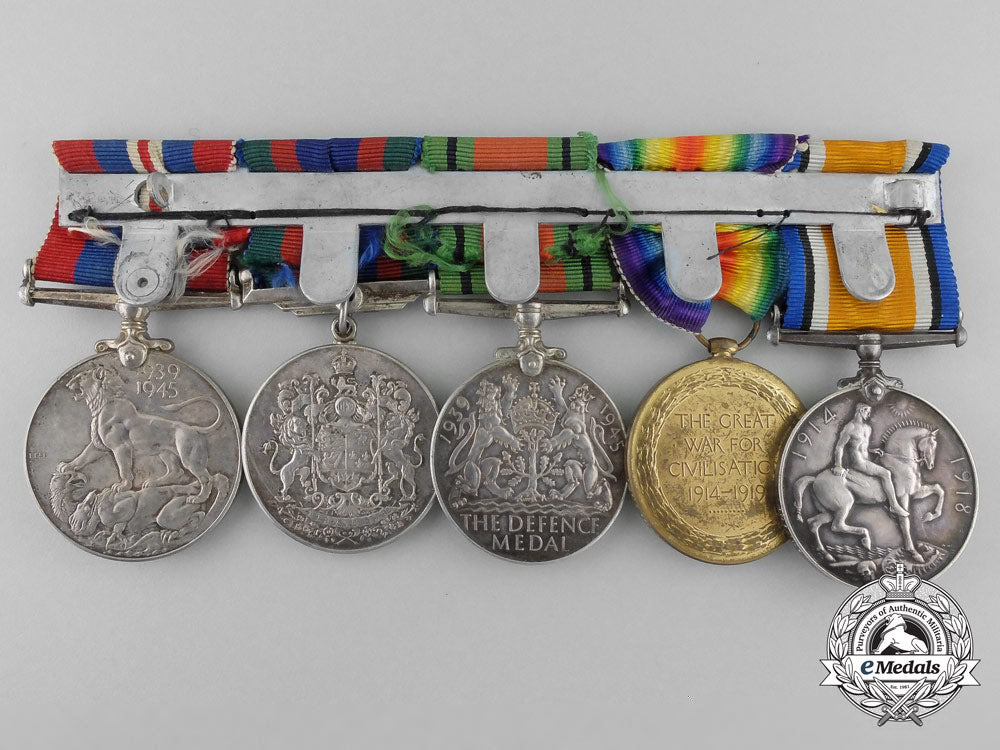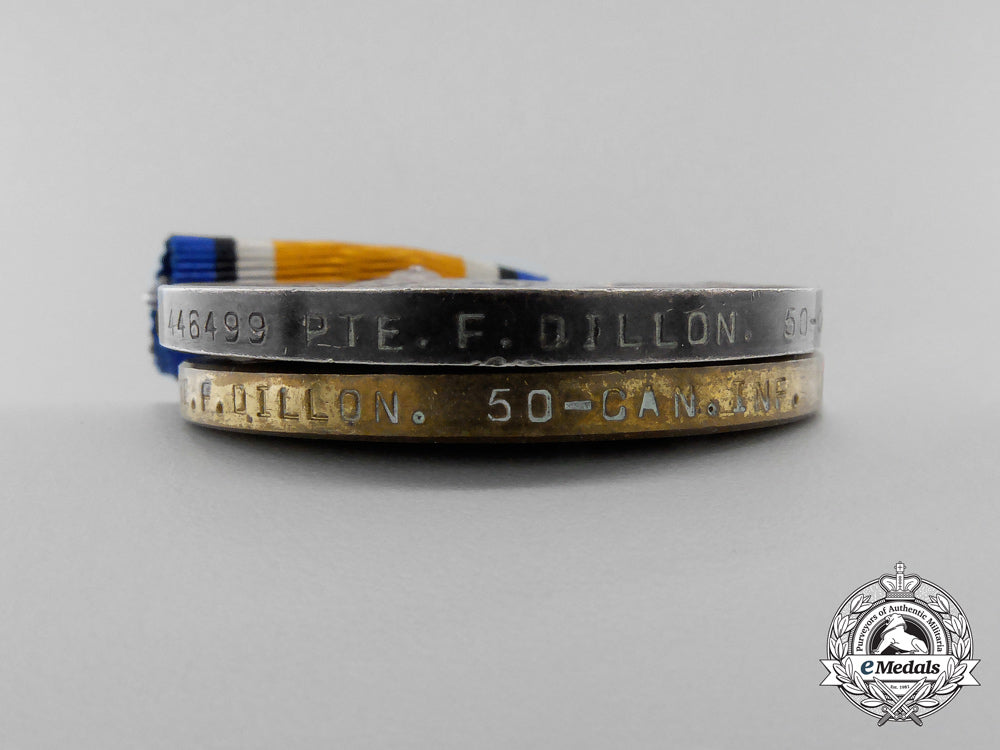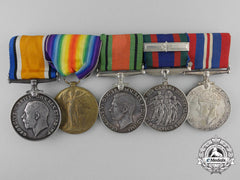
LOADING ...
In response to evolving domestic opinion, eMedals Inc has made the conscious decision to remove the presentation of German Third Reich historical artifacts from our online catalogue. For three decades, eMedals Inc has made an effort to preserve history in all its forms. As historians and researchers, we have managed sensitive articles and materials with the greatest of care and respect for their past and present social context. We acknowledge the growing sentiments put forth by the Canadian public and have taken proactive actions to address this opinion.
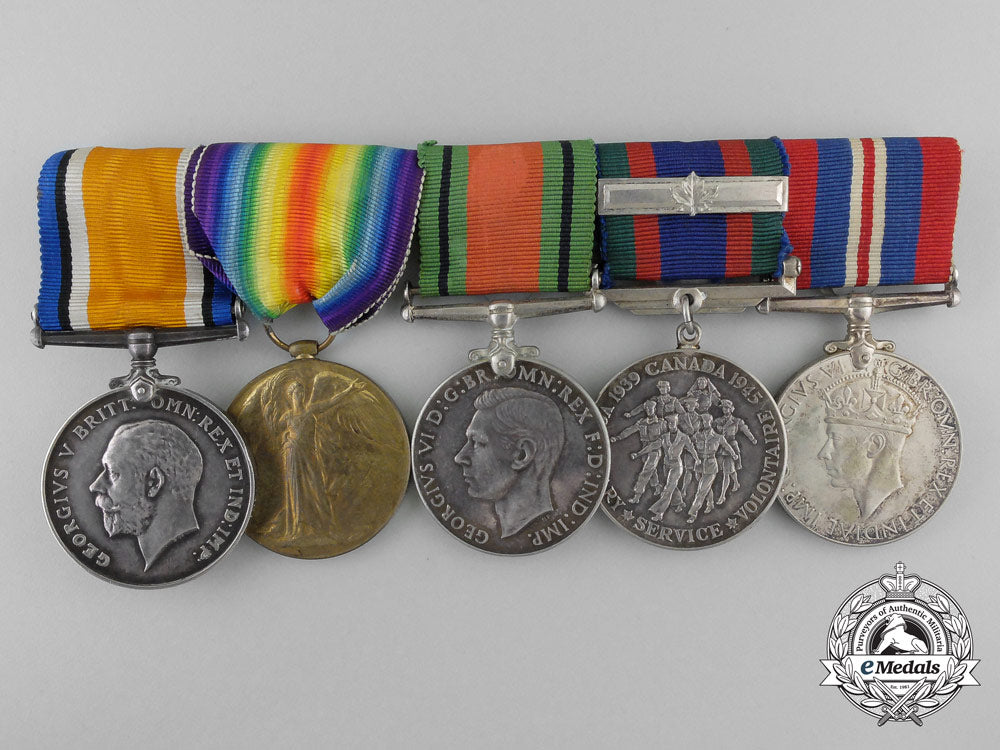
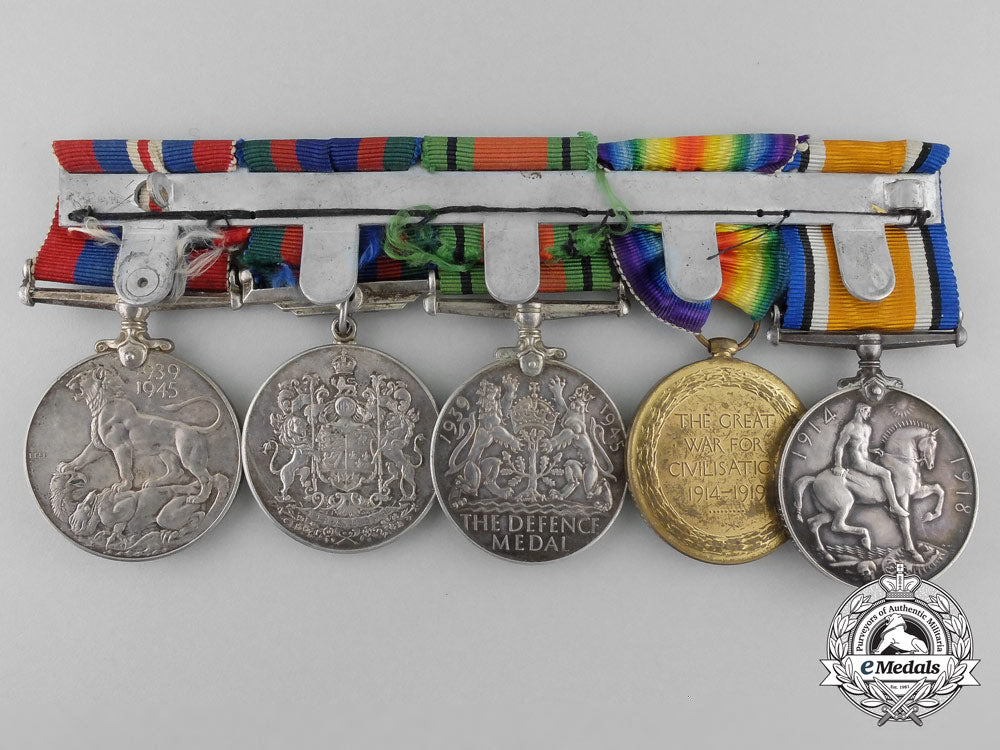

A First & Second War Group To 50Th Canadian Battalion; Wounded Three Times
A First & Second War Group To 50Th Canadian Battalion; Wounded Three Times
SKU: ITEM: C4064
Current Bid:
Your Max Bid:
Bid History:
Time Remaining:
Couldn't load pickup availability
Shipping Details
Shipping Details
eMedals offers rapid domestic and international shipping. Orders received prior to 12:00pm (EST) will be shipped on the same business day.* Orders placed on Canadian Federal holidays will be dispatched the subsequent business day. Courier tracking numbers are provided for all shipments. All items purchased from eMedals can be returned for a full monetary refund or merchandise credit, providing the criteria presented in our Terms & Conditions are met. *Please note that the addition of a COA may impact dispatch time.
Shipping Details
eMedals offers rapid domestic and international shipping. Orders received prior to 12:00pm (EST) will be shipped on the same business day.* Orders placed on Canadian Federal holidays will be dispatched the subsequent business day. Courier tracking numbers are provided for all shipments. All items purchased from eMedals can be returned for a full monetary refund or merchandise credit, providing the criteria presented in our Terms & Conditions are met. *Please note that the addition of a COA may impact dispatch time.
Description
Description
British War Medal (446499 PTE. F. DILLON. 50-CAN.INF.); Victory Medal (446499 PTE. F. DILLON. 50-CAN.INF.); Defence Medal; Canadian Volunteer Service Medal with Overseas Clasp; and War Medal 1939-1945. Mounted to a suspension with swing bar pinback, as worn by the veteran, original ribbons, semi-dark patina on the four silver medals, light contact, better than very fine.
Footnote: Frank Dillon was born on May 15, 1893 in Halifax, Nova Scotia. He signed his CEF Attestation Paper as a Private (446499) with the 56th Infantry Battalion "Calgary Battalion", on May 3, 1915 in Calgary, Alberta, at the age of 22, naming his next-of-kin as Mary Sandbrook of Winnipeg, Manitoba, as his father was deceased, the address later changed to Brandon, Manitoba, stating that he has no previous military service, that he was not married and that his trade was that of Weaver. The Battalion was raised and mobilized in Calgary, Alberta under the authority of G.O. 86, July 1, 1915. The Battalion embarked Halifax, Nova Scotia on March 23, 1916 aboard the S.S. Baltic, under the command of Lieutenant-Colonel W.C.G. Armstrong with a strength of 40 officers and 1,070 other ranks, arriving in England on April 9th. He is acknowledged in his records as having been married to Mabel Dillon of Grenfell, Saskatchewan. Four and half weeks after his arrival in England, Dillon was transferred to the 50th Infantry Battalion "Calgary Regiment" on May 12, 1916, and forfeited three days' pay for his first case of "drunkenness" on June 19, 1916. Three months after having been transferred to the 50th Infantry Battalion, he embarked for France on August 10, 1916, arriving in Le Havre on the 11th. He ran afoul of the authorities, as he was sentenced on August 16, 1916, forfeiting five days' pay for being Absent Without Leave from 9:30 pm on August 9th to 6:00 am on August 10th. Dillon incurred his first major injury, admitted to No. 11 Field Ambulance suffering from a shrapnel (gun shot) wound to his left forearm, on September 12, 1916. The following day, he was transferred to No. 8 Casualty Clearing Station, where he was treated for the next month before being discharged to duty on October 11th. Two weeks later, he was admitted to No. 54 Field Ambulance, where the doctor diagnosed him with "I.C.T. (inflammation of the connecting tissue) in his left foot, on October 23, 1916. He was transferred to No. 90 Field Ambulance on the 25th, where he received additional treatment, before returning to duty on the 28th. He is documented as having been with 10th C.J.B. Signals on September 9, 1917. Dillon was in combat again and for a second time, suffered shrapnel (gun shot) wounds, this time to the right side of his face, neck and wrist on October 23, 1917. He was admitted to No. 3 Canadian Field Ambulance on October 25, 1917, then transferred to No. 54 General Hospital at Boulogne on the 26th, where he would be treated for the next three weeks, before being transferred for recuperation to No. 7 Convalescent Depot at Boulogne on November 16th. He was discharged to Base Details on November 18th, then posted to the Canadian Base Depot on November 22nd, discharged to No. 3 Rest Camp Marlboro, then posted to the Canadian Corps Reinforcement Camp on December 4, 1917, rejoining his unit on the 8th. It wasn't until May 29, 1918 that he officially rejoined the 50th Infantry Battalion in the field. On June 13, 1918, he was sentenced to seven days' loss of pay, as the result of having untidy quarters and missing rifle duty. Dillon suffered his third major injury, as he was "Gassed" (mustard gas) on November 2, 1918, the initial treatment done at No. 13 Canadian Field Ambulance. He was transferred to No. 23 Casualty Clearing Station on the 3rd, then admitted to No. 4 General Hospital at Camiers on November 4th. After ten days, he was transferred to No. 6 Convalescent Depot at Etaples on the 14th for two weeks, before seeing another transfer, this time to No. 10 Convalescent Depot at Ecault on November 28th. Two weeks later, he was posted to the Canadian Corps Base Depot on December 13th, before being invalided to England and posted to the Alberta Regimental Depot at Bramshott on January 9, 1919. Five days later, he was posted to the 21st Reserve Battalion on the 14th. He was taken on strength at the Canadian Concentration Camp at Kinmel Park, North Wales for return to Canada, on January 20, 1919, embarking Liverpool, England aboard His Majesty's Troop Ship Canada, on March 24, 1919. Dillon was discharged upon demobilization at Dispersal Station "M", Military District No. 10 in Winnipeg, Manitoba, on April 5, 1919, credited with having served in England and France and entitled to wear the War Service Badge, Class "A", number 162192. He was also paid a War Service Gratuity of $600. In his Military Will, dated May 18, 1916, he stated that "In the event of my death on my death, I give the whole of my effects to my wife, Mrs. Frank Dillon, Hanna, Alberta, Canada." but the Will was of course, never executed. For his First World War service, he was awarded the British War Medal and the Victory Medal. Dillon also served during the Second World War and for his service, was awarded the Defence Medal, the Canadian Volunteer Service Medal with Overseas Clasp and the War Medal 1939-1945.
Description
British War Medal (446499 PTE. F. DILLON. 50-CAN.INF.); Victory Medal (446499 PTE. F. DILLON. 50-CAN.INF.); Defence Medal; Canadian Volunteer Service Medal with Overseas Clasp; and War Medal 1939-1945. Mounted to a suspension with swing bar pinback, as worn by the veteran, original ribbons, semi-dark patina on the four silver medals, light contact, better than very fine.
Footnote: Frank Dillon was born on May 15, 1893 in Halifax, Nova Scotia. He signed his CEF Attestation Paper as a Private (446499) with the 56th Infantry Battalion "Calgary Battalion", on May 3, 1915 in Calgary, Alberta, at the age of 22, naming his next-of-kin as Mary Sandbrook of Winnipeg, Manitoba, as his father was deceased, the address later changed to Brandon, Manitoba, stating that he has no previous military service, that he was not married and that his trade was that of Weaver. The Battalion was raised and mobilized in Calgary, Alberta under the authority of G.O. 86, July 1, 1915. The Battalion embarked Halifax, Nova Scotia on March 23, 1916 aboard the S.S. Baltic, under the command of Lieutenant-Colonel W.C.G. Armstrong with a strength of 40 officers and 1,070 other ranks, arriving in England on April 9th. He is acknowledged in his records as having been married to Mabel Dillon of Grenfell, Saskatchewan. Four and half weeks after his arrival in England, Dillon was transferred to the 50th Infantry Battalion "Calgary Regiment" on May 12, 1916, and forfeited three days' pay for his first case of "drunkenness" on June 19, 1916. Three months after having been transferred to the 50th Infantry Battalion, he embarked for France on August 10, 1916, arriving in Le Havre on the 11th. He ran afoul of the authorities, as he was sentenced on August 16, 1916, forfeiting five days' pay for being Absent Without Leave from 9:30 pm on August 9th to 6:00 am on August 10th. Dillon incurred his first major injury, admitted to No. 11 Field Ambulance suffering from a shrapnel (gun shot) wound to his left forearm, on September 12, 1916. The following day, he was transferred to No. 8 Casualty Clearing Station, where he was treated for the next month before being discharged to duty on October 11th. Two weeks later, he was admitted to No. 54 Field Ambulance, where the doctor diagnosed him with "I.C.T. (inflammation of the connecting tissue) in his left foot, on October 23, 1916. He was transferred to No. 90 Field Ambulance on the 25th, where he received additional treatment, before returning to duty on the 28th. He is documented as having been with 10th C.J.B. Signals on September 9, 1917. Dillon was in combat again and for a second time, suffered shrapnel (gun shot) wounds, this time to the right side of his face, neck and wrist on October 23, 1917. He was admitted to No. 3 Canadian Field Ambulance on October 25, 1917, then transferred to No. 54 General Hospital at Boulogne on the 26th, where he would be treated for the next three weeks, before being transferred for recuperation to No. 7 Convalescent Depot at Boulogne on November 16th. He was discharged to Base Details on November 18th, then posted to the Canadian Base Depot on November 22nd, discharged to No. 3 Rest Camp Marlboro, then posted to the Canadian Corps Reinforcement Camp on December 4, 1917, rejoining his unit on the 8th. It wasn't until May 29, 1918 that he officially rejoined the 50th Infantry Battalion in the field. On June 13, 1918, he was sentenced to seven days' loss of pay, as the result of having untidy quarters and missing rifle duty. Dillon suffered his third major injury, as he was "Gassed" (mustard gas) on November 2, 1918, the initial treatment done at No. 13 Canadian Field Ambulance. He was transferred to No. 23 Casualty Clearing Station on the 3rd, then admitted to No. 4 General Hospital at Camiers on November 4th. After ten days, he was transferred to No. 6 Convalescent Depot at Etaples on the 14th for two weeks, before seeing another transfer, this time to No. 10 Convalescent Depot at Ecault on November 28th. Two weeks later, he was posted to the Canadian Corps Base Depot on December 13th, before being invalided to England and posted to the Alberta Regimental Depot at Bramshott on January 9, 1919. Five days later, he was posted to the 21st Reserve Battalion on the 14th. He was taken on strength at the Canadian Concentration Camp at Kinmel Park, North Wales for return to Canada, on January 20, 1919, embarking Liverpool, England aboard His Majesty's Troop Ship Canada, on March 24, 1919. Dillon was discharged upon demobilization at Dispersal Station "M", Military District No. 10 in Winnipeg, Manitoba, on April 5, 1919, credited with having served in England and France and entitled to wear the War Service Badge, Class "A", number 162192. He was also paid a War Service Gratuity of $600. In his Military Will, dated May 18, 1916, he stated that "In the event of my death on my death, I give the whole of my effects to my wife, Mrs. Frank Dillon, Hanna, Alberta, Canada." but the Will was of course, never executed. For his First World War service, he was awarded the British War Medal and the Victory Medal. Dillon also served during the Second World War and for his service, was awarded the Defence Medal, the Canadian Volunteer Service Medal with Overseas Clasp and the War Medal 1939-1945.
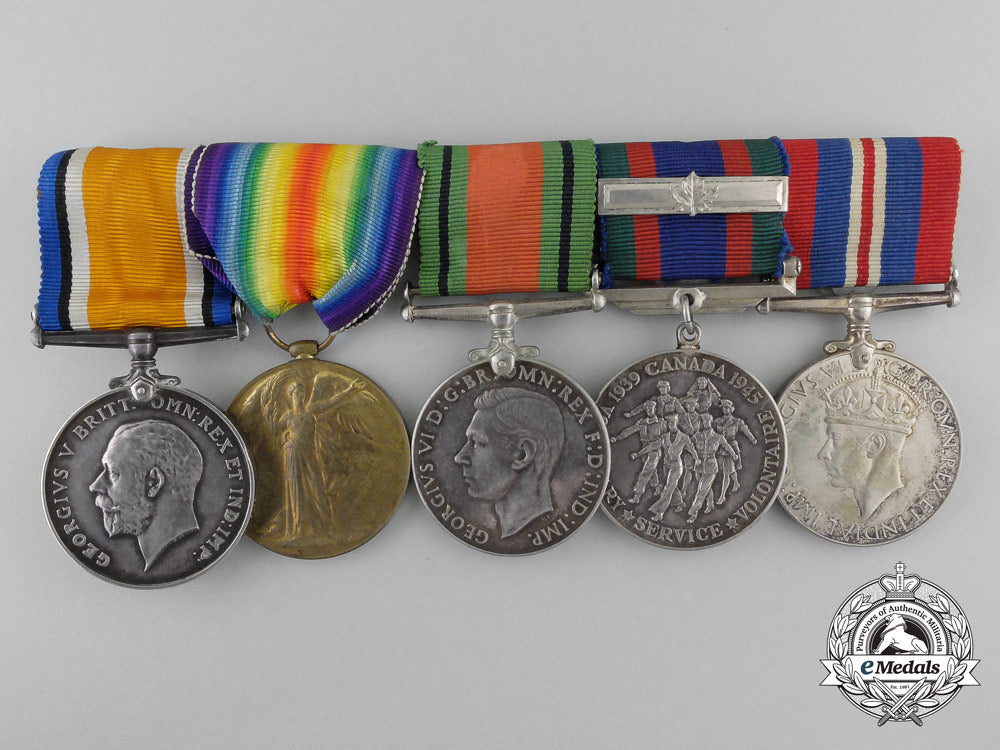
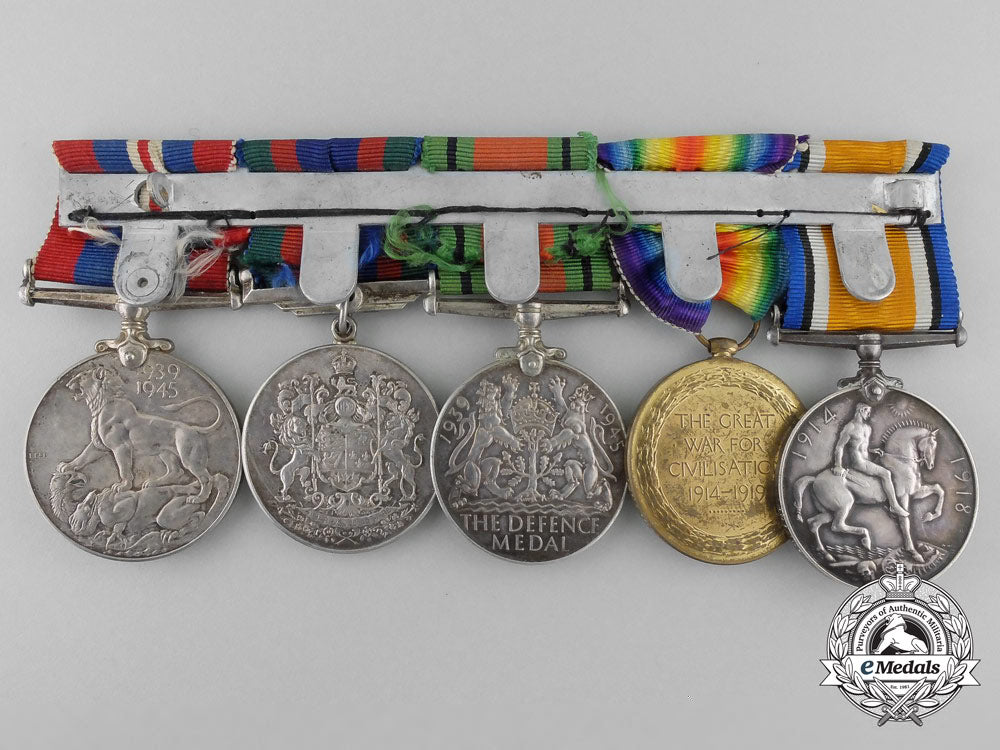
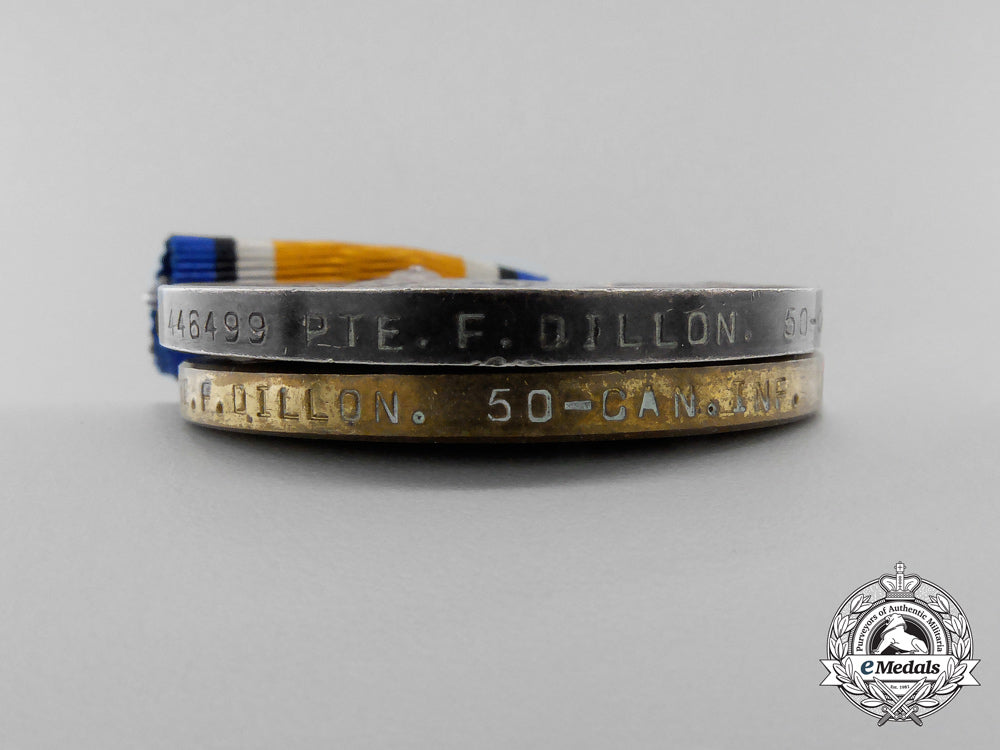
You May Also Like
United Kingdom. An Order of the British Empire, Commander
GB8222
Thailand, Kingdom. An Order of the Crown, Grand Cross, c.1945
W6710
Germany, Feueschutzpolizei. An Em/Nco’s Visor Cap
G48848
Brazil, Kingdom. An Order of Military Merit, Commander
W8368
United States. A Second War Airborne Army Ring
W8367
-
United Kingdom. An Order of the British Empire, Commander
GB8222
Add to CartRegular price $675 USDRegular price $0 USD Sale price $675 USDUnit price / per -
Thailand, Kingdom. An Order of the Crown, Grand Cross, c.1945
W6710
Add to CartRegular price $3,000 USDRegular price $0 USD Sale price $3,000 USDUnit price / per -
Germany, Feueschutzpolizei. An Em/Nco’s Visor Cap
G48848
Add to CartRegular price $340 USDRegular price $0 USD Sale price $340 USDUnit price / per -
Brazil, Kingdom. An Order of Military Merit, Commander
W8368
Add to CartRegular price $320 USDRegular price $0 USD Sale price $320 USDUnit price / per -
United States. A Second War Airborne Army Ring
W8367
Add to CartRegular price $200 USDRegular price $0 USD Sale price $200 USDUnit price / per
Do you have a similar item you are interested in selling?
Please complete the form and our client care representatives will contact you.
Sell Item
